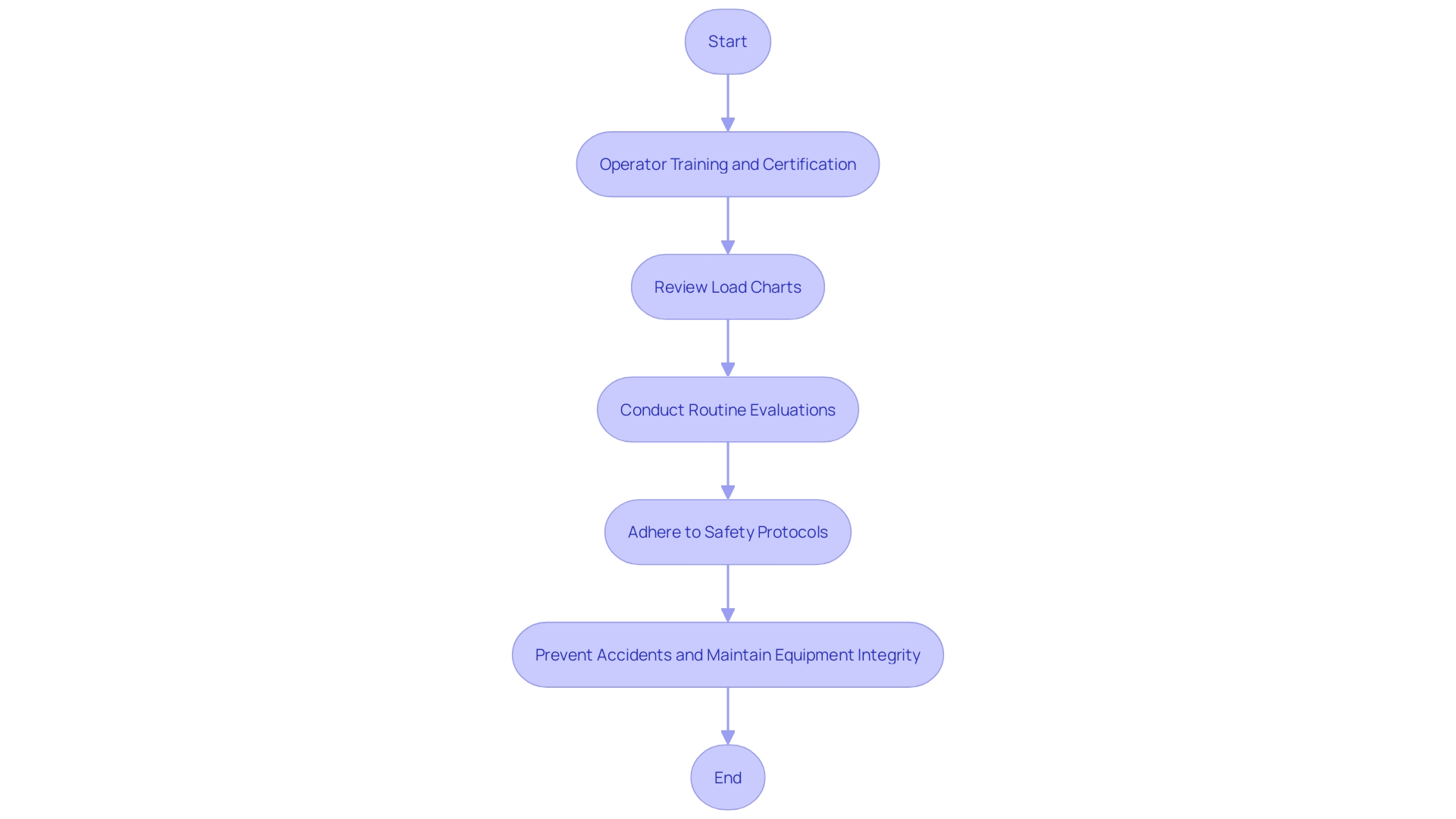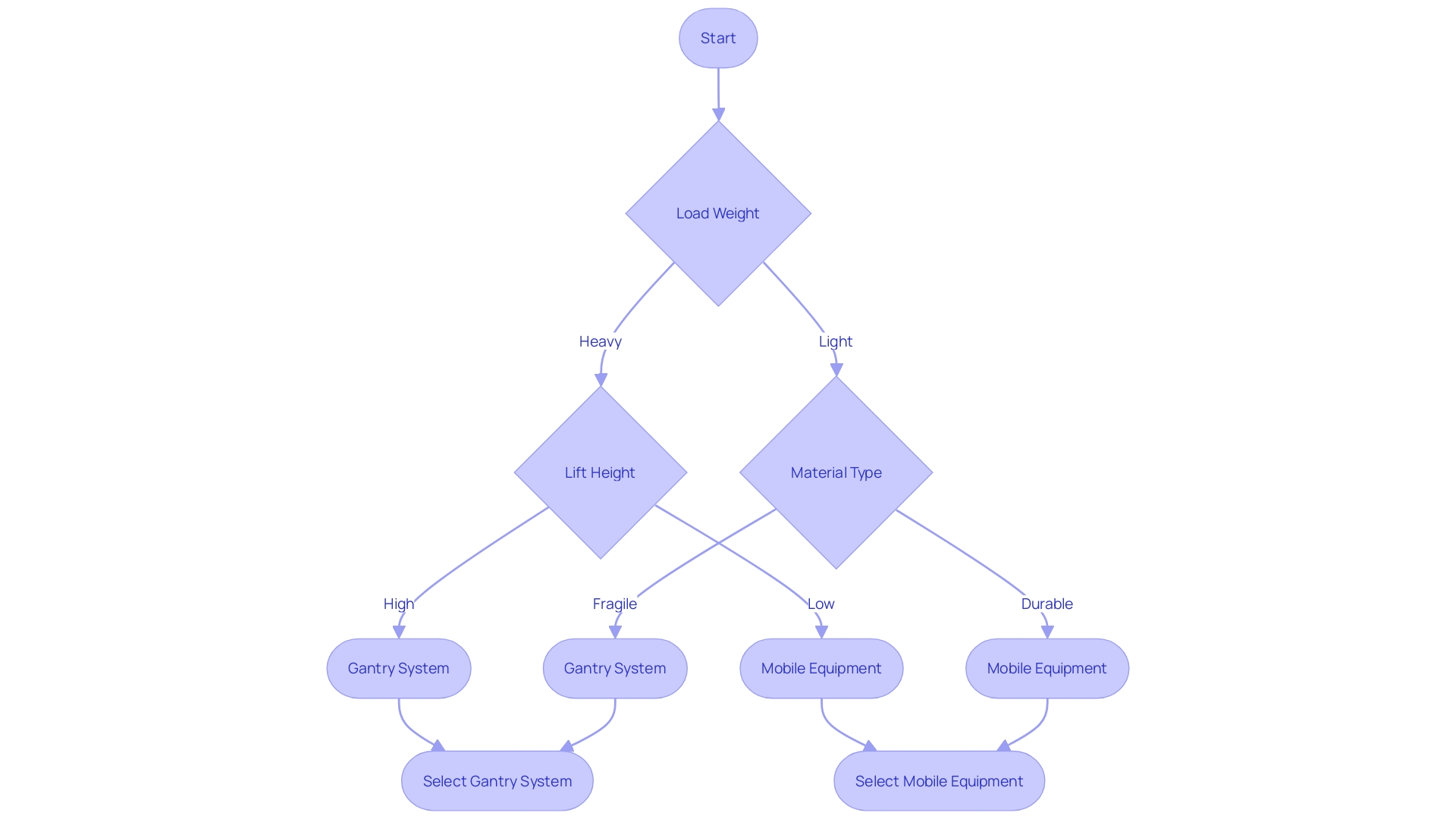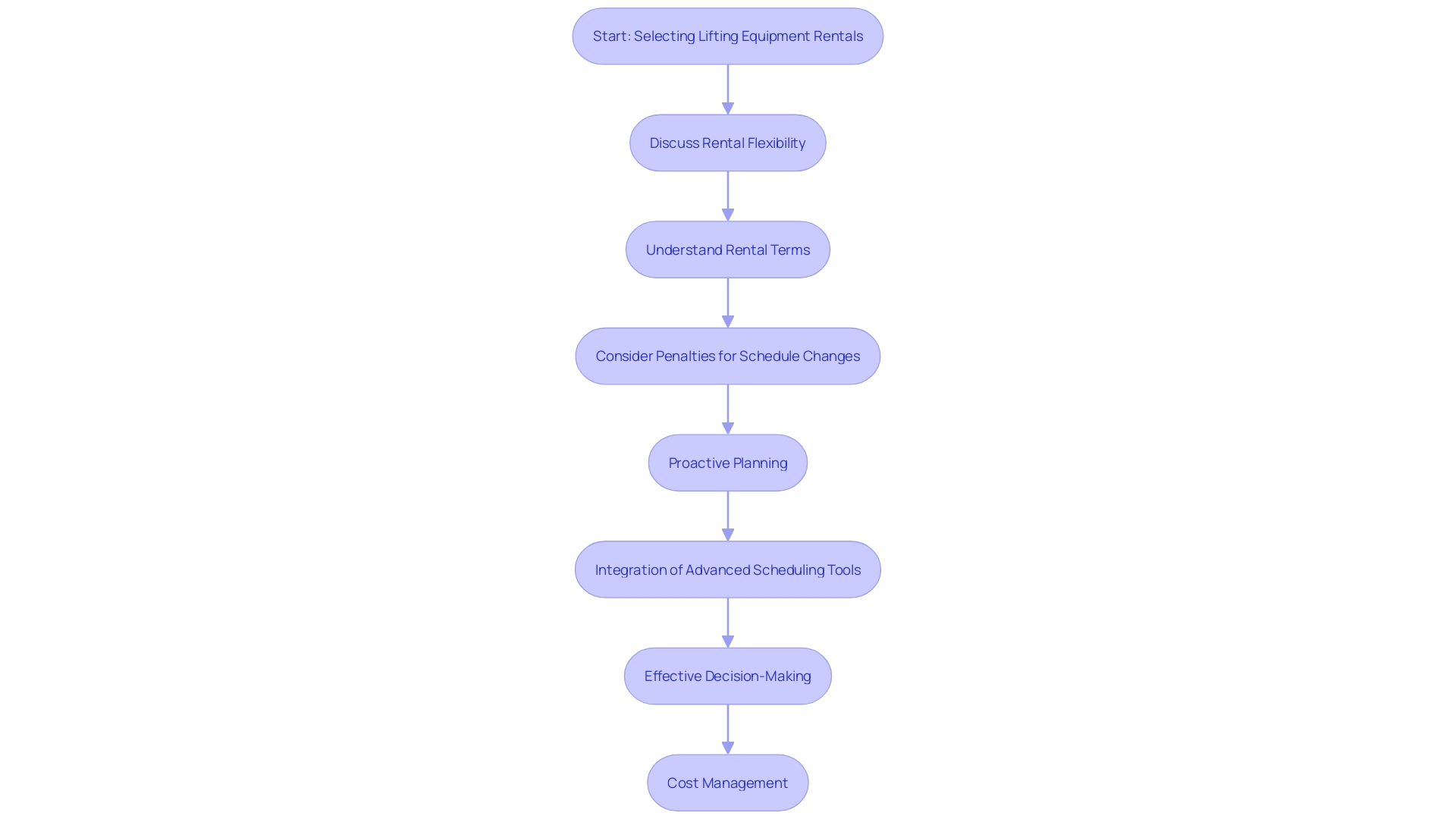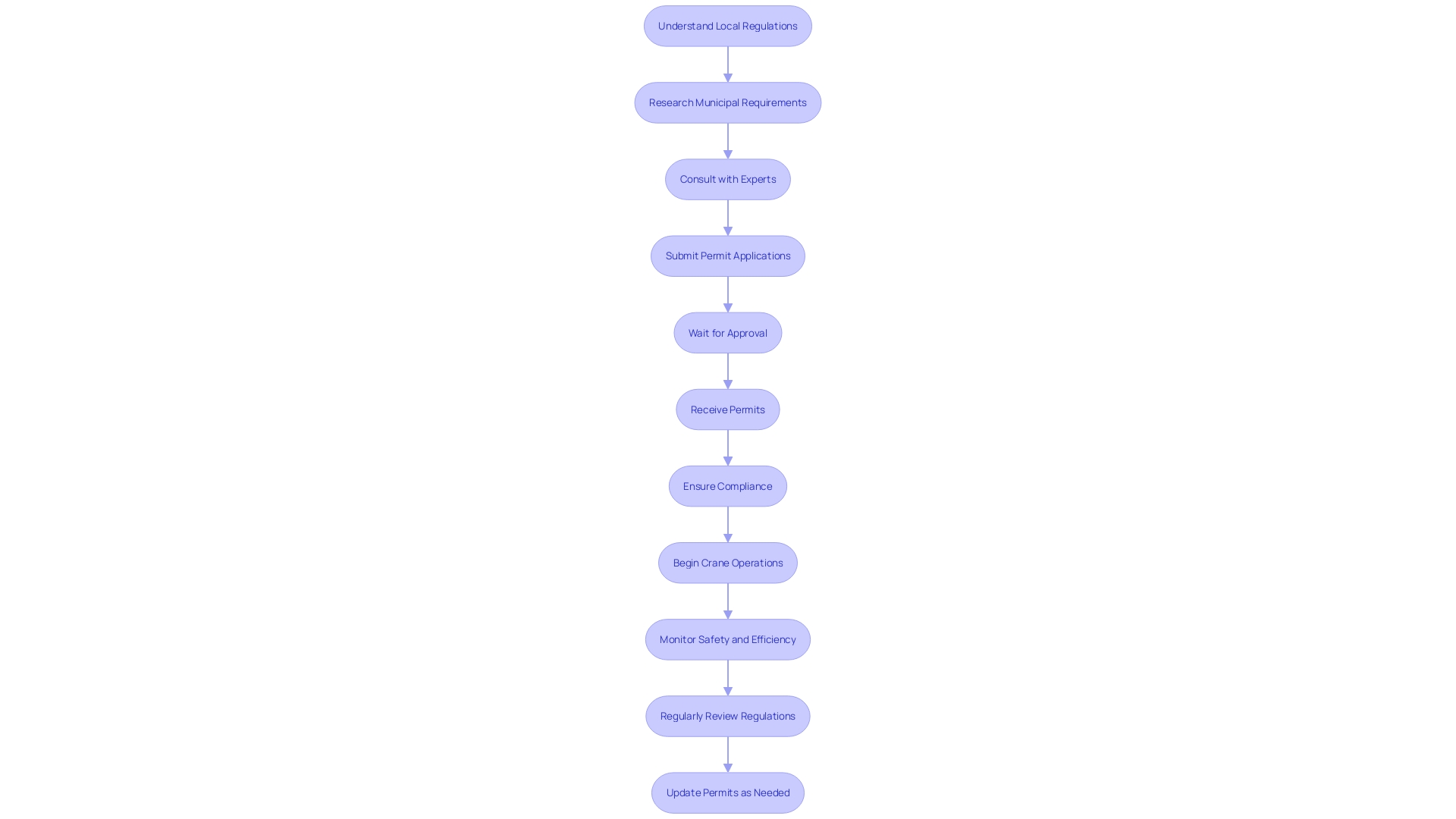Introduction
Renting cranes for any project comes with a set of challenges and crucial considerations that must be addressed to ensure safety, efficiency, and compliance. From selecting the appropriate crane based on specific job requirements to adhering to stringent safety protocols, each step in the process demands meticulous attention. Understanding the importance of regular inspections, operator certification, and detailed planning can significantly reduce risks and enhance project outcomes.
Additionally, navigating local regulations and acquiring necessary permits are essential to avoid legal complications and delays. Embracing advanced planning tools and technology can further streamline operations, ensuring smooth and safe crane rental experiences. This comprehensive guide delves into the key aspects that need to be considered when renting cranes, providing practical solutions to common challenges faced in the industry.
Key Safety Considerations
Guaranteeing security when leasing lifting equipment is essential. Operators must adhere to strict security protocols to prevent accidents. Insufficient training and certification are primary errors that can lead to severe ramifications. It’s essential to review the load chart of the lifting device and understand its limits to avoid overloading, which can result in machinery failures and significant losses. Furthermore, guaranteeing that all operators are certified and that the equipment receives routine evaluations is essential to upholding standards. The commitment to safety in lifting operations not only enhances efficiency but also safeguards the well-being of workers and the longevity of the equipment.

Job Requirements and Crane Selection
Selecting the suitable equipment begins with a thorough examination of the job's particular requirements. Key factors such as the load weight, lift height, and type of materials being moved are crucial in determining the most suitable lifting equipment. For instance, gantry systems are ideal for industrial settings where heavy loads need to be moved with precision, whereas mobile equipment offers flexibility for varied construction sites. Such evaluations guarantee the proper alignment between hoisting equipment capabilities and task specifications, improving productivity and security. As Hannah Boothe notes, 'From construction sites to manufacturing plants, the efficiency and safety of these operations significantly hinge on the proper management of these powerful machines.' This underscores the importance of selecting the right equipment for each unique task.

Project Timeline and Crane Rental Flexibility
The schedule of your undertaking can greatly affect lifting equipment rental choices. Discussing rental flexibility with suppliers is crucial, especially given potential delays or schedule changes that may necessitate adjustments. By understanding rental terms and potential penalties for changes, you can plan more effectively and avoid unexpected costs. This approach aligns with the broader industry trend of integrating advanced planning and scheduling tools, which enhance precision and reduce errors. For instance, companies like Manitowoc have continually innovated to provide safer and more reliable lifting solutions, highlighting the importance of proactive planning in industrial asset management.

Permitting and Compliance
Navigating local regulations and obtaining the necessary permits is crucial when hiring a crane. Each municipality has its own requirements, which may involve inspections or additional paperwork. Ensuring compliance not only avoids legal issues but also guarantees that the initiative proceeds smoothly.
The importance of adhering to regulations cannot be overstated, as ignoring them could lead to significant delays and financial penalties. For instance, the Inflation Reduction Act has emphasized how the pace of infrastructure advancement, including clean energy initiatives, relies heavily on securing timely approvals. This underscores the necessity for a thorough understanding of local regulations to avoid costly interruptions.
Moreover, advancements in technology have streamlined the permit acquisition process. As noted by experts in government technology, moving away from old paper processes to more agile, digital systems can save time and foster continuous improvement. This shift ensures that the handling of heavy equipment, such as hoisting devices, is done efficiently and safely, reducing the risk of accidents and enhancing project timelines.
Incorporating best practices in equipment management is equally important. Regular training and certification of operators are essential to maintaining safety and operational efficiency. Companies like Manitowoc, renowned for their innovation in crane engineering, emphasize the importance of these practices. They have been at the forefront of making lifting equipment safer and more reliable, further highlighting the critical role of compliance in successful project execution.

Conclusion
Safety is essential when renting cranes, requiring strict adherence to protocols, operator certifications, and regular inspections. Understanding the crane's load chart and limitations is vital to prevent overload situations that can lead to accidents and equipment failure. A strong commitment to safety not only protects workers but also extends the equipment's lifespan.
Choosing the right crane for specific job requirements is equally important. Analyzing load weight, lift height, and material types helps in selecting the appropriate crane—whether it's a gantry crane for industrial tasks or a mobile crane for diverse sites. This careful selection enhances efficiency and safety.
Project timelines and rental flexibility significantly influence crane operations. Clear communication with suppliers about rental terms and potential penalties for changes aids in effective planning and helps avoid unexpected costs. Utilizing advanced planning tools can streamline operations and facilitate adjustments in case of delays.
Navigating local regulations and securing necessary permits is crucial for smooth project execution. Understanding municipal requirements and leveraging technology to simplify the permitting process can save time and reduce risks. By incorporating best practices in operator training and compliance, projects can achieve higher safety standards and operational efficiency.
Addressing these key considerations ensures that crane operations are completed safely, efficiently, and with minimal disruptions.




